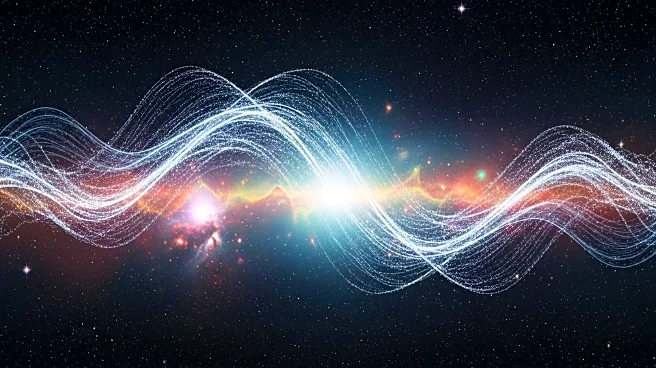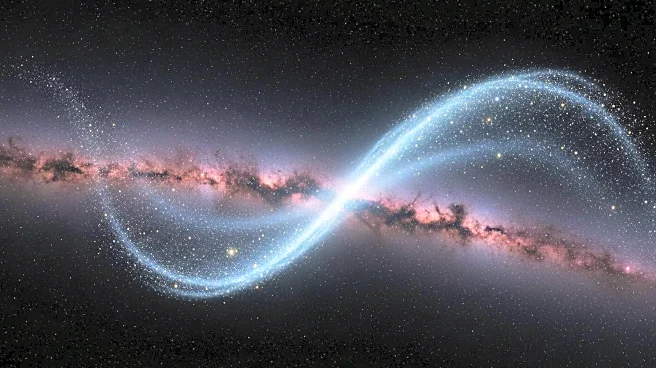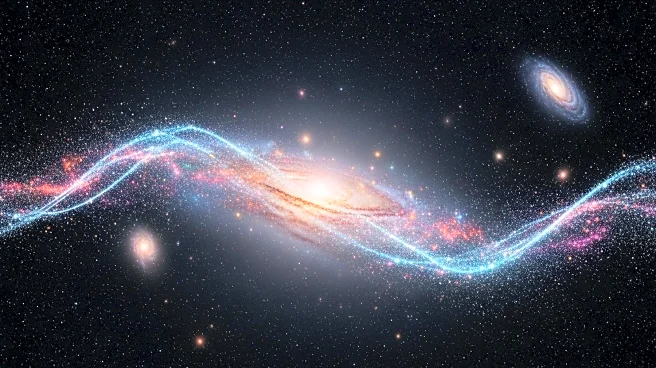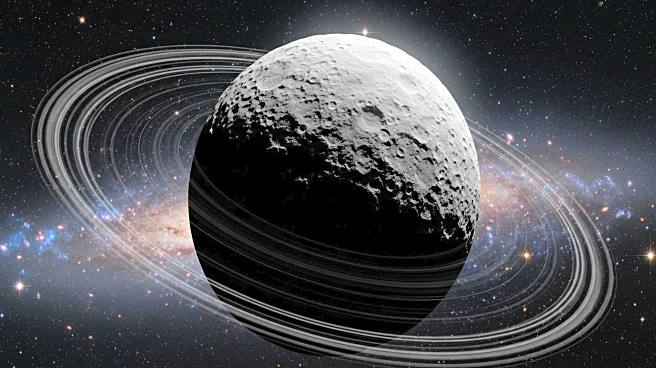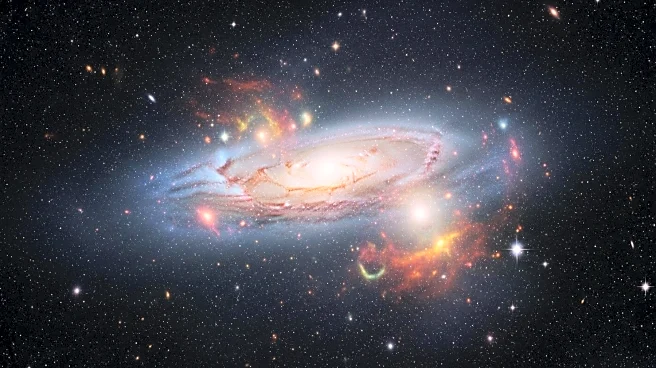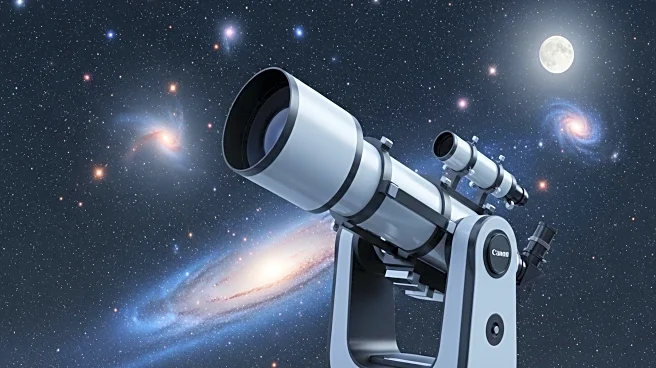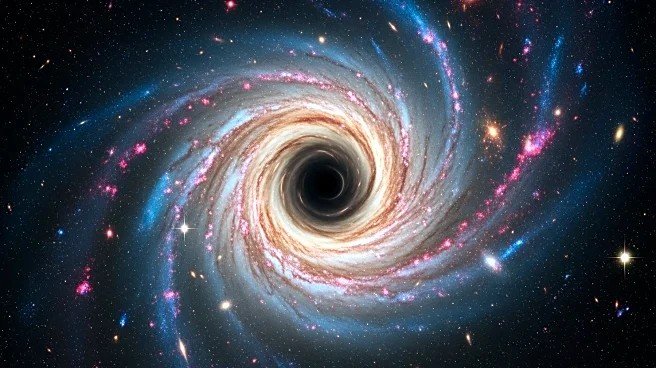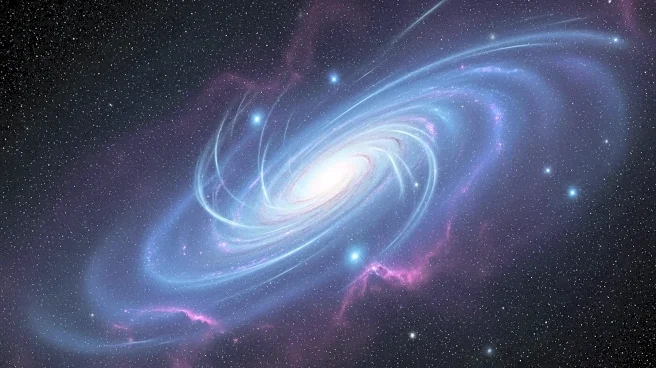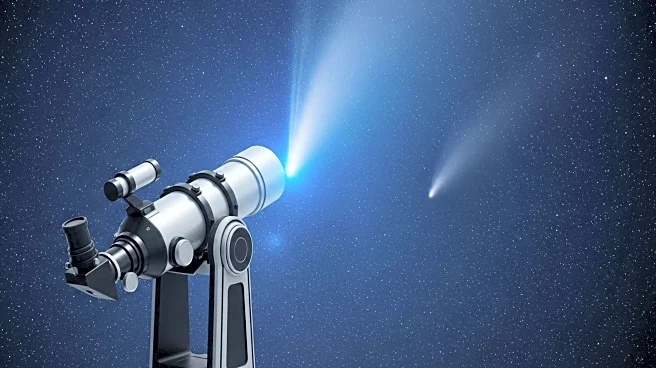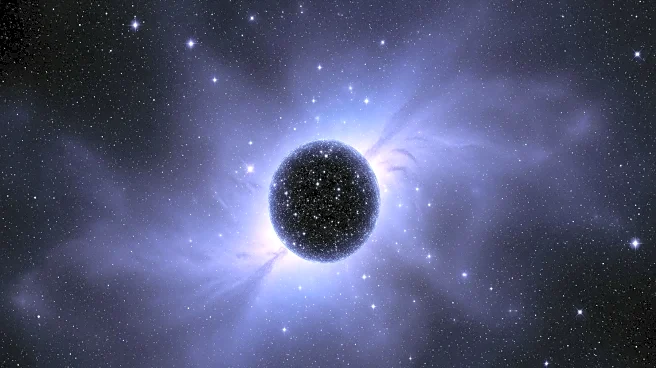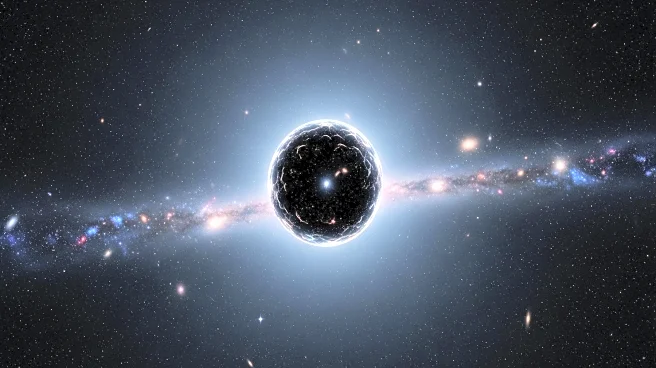What's Happening?
A team of researchers led by Eloisa Poggio from the Astrophysical Observatory of Torino has identified a 'Great Wave' propagating through the Milky Way's outskirts. Using data from the European Space Agency's Gaia mission, which has mapped over a billion stars, the team traced the galaxy's shape using 20,000 massive young stars. The wave is characterized by stars' vertical motions, which exceed expectations from a simple warped disk. This discovery suggests a significant event in the galaxy's past, possibly a collision with another galaxy. The wave's origin remains uncertain, but it is reminiscent of ripples caused by a pebble thrown in a pond.
Why It's Important?
The identification of the 'Great Wave' provides insights into the dynamic nature of the Milky Way and its historical interactions with other galaxies. Understanding these movements can help astronomers piece together the galaxy's evolutionary history and the forces shaping its structure. The findings could have implications for future studies on galactic formation and evolution, potentially influencing models used to predict cosmic phenomena. This research highlights the importance of precise stellar mapping in uncovering hidden aspects of our galaxy's past.
What's Next?
Future work will involve further analysis of Gaia data and improved computer simulations to explore the wave's origin and its connection to other galactic structures like the Radcliffe Wave. Researchers aim to determine whether the wave is an extension of known structures or a separate phenomenon. Continued study of stellar motions and positions will be crucial in unraveling the mysteries of the Milky Way's past interactions and their impact on its current form.
Beyond the Headlines
The discovery of the 'Great Wave' raises questions about the long-term effects of galactic collisions and their role in shaping the Milky Way's structure. It also underscores the complexity of galactic dynamics, where multiple forces and events contribute to the observed stellar motions. This research may lead to a deeper understanding of how galaxies evolve and interact over cosmic timescales.
